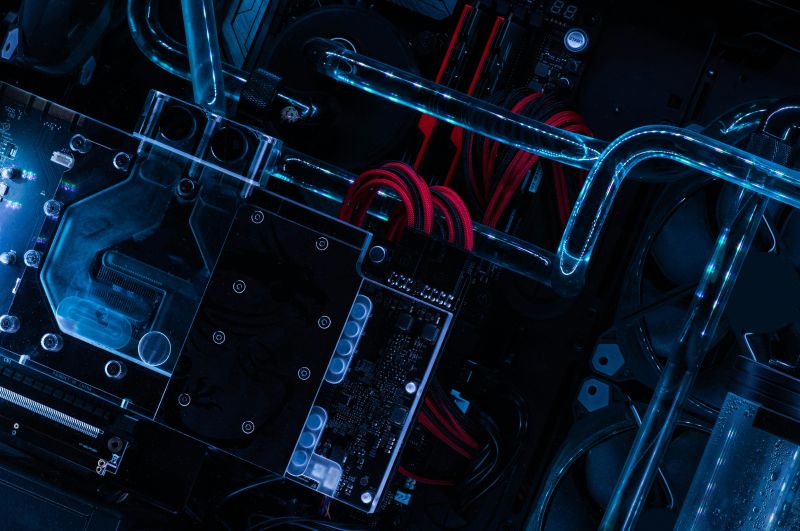DHS is one of 11 federal agencies participating in the Small Business Innovation Research Program (SBIR), one of the largest public-private partnerships in the United States. DHS Science and Technology Directorate (S&T) issues solicitations to address the needs of seven DHS operational units—the Federal Emergency Management Agency, Transportation Security Administration, U.S. Citizenship and Immigration Services, U.S. Coast Guard, U.S. Customs and Border Protection, U.S. Immigration and Customs Enforcement, and U.S. Secret Service—as well as first responders.
Fifteen years and 34 solicitations after the DHS SBIR program was initiated, the program has awarded more than 1,000 SBIR contracts. In June, 22 companies received contract awards to begin Phase I of the SBIR program and prove the feasibility of their concept over a six-month period in a specific area of research. This brought the total number of DHS SBIR contract awards to 1,018.
The SBIR program has three phases. Phase I is a concept feasibility effort up to $150,000 for a period of six months. Phase II awards up to $1,000,000 to develop a prototype and demonstrate their capability. Phase III efforts are for further development and commercialization using non-SBIR program funds. SBIR was created in 1982 through the Small Business Innovation Development Act. DHS started its SBIR program with a solicitation in 2004 that resulted in 66 contracts, totaling more than $6 million in eight topic areas and accounted for some of the earliest success stories for DHS SBIR.
S&T’s SBIR Successes
- Rapid DNA by ANDE Corporation
Rapid DNA is one of the successful products stemming from DHS SBIR, with a total investment of more than $5 million. It was developed because DHS needed a technology to quickly analyze DNA to verify family relationships (kinship), and identify victims of mass casualty events and human trafficking. Last year Rapid DNA identified 85% of the victims of the California Camp Fire, and this year Kentucky became the first state to use Rapid DNA for solving rape cases.
Rapid DNA is gaining traction with the government and popular culture. The Rapid DNA Act of 2017 was passed to support criminal investigations by the Federal Bureau of Investigation. AABB, the former American Association of Blood Banks, accredited the instrument and included it in the Standards for Relationship Testing Laboratories in January 2018.
- Low-cost networked flood sensors by Evigia Systems, Inc., Physical Optics Corporation, and Progeny Systems Corporation
The network of highly reliable low-cost flood sensors monitors flood-prone areas in real-time, rapidly measures rising water, and alerts officials, industry and citizens to potential threats like flash flooding. The sensors can be deployed for years at a time with little to no maintenance. First responders receive data from the networked flood sensors instead of needing to physically assess flood areas and can therefore focus emergency resources to where they are needed the most.
In 2016, the three industry performers were awarded SBIR Phase I funds to make prototypes of the flood sensors. During Phase II, in 2017, the sensors were refined and improved. Last summer, nearly 300 sensors were deployed in the field for testing and evaluation. S&T is working with the three industry performers to identify commercial markets and foster community awareness and adoption.
- Burn Saver by TDA Research, Inc.
Burn Saver Thermal Sensor is a small wearable device designed to help keep firefighters safe. Clipped to firefighters’ gear, the device automatically alerts 45 seconds before the surrounding temperature damages their personal protective equipment, giving them time to escape and reduce the incidence of thermal injuries and fatalities. A Phase II Option contract was awarded in November 2017 for further development and testing. Initial experiments have shown that Burn Saver can respond in less than 10 seconds to 260°C (500°F) ambient air temperatures.
The final prototype recently underwent Operational Field Assessment at the National Fire Academy in Emmitsburg, Maryland. Firefighters wore Burn Saver while conducting various operations to assess its ruggedness and comfort of wearing. Evaluators agreed Burn Saver could become a valuable sensor for firefighters because they believe the use of improved turnout gear has increased thermal protection but has made it more difficult to sense dangerous thermal conditions.
- Symbiote Defense intrusion-detection system by Red Balloon Security
Red Balloon Security, a world leader in embedded device security, was awarded $747,000 under a two-year SBIR Phase II contract in 2017 to further develop its Symbiote Defense intrusion-detection/protection system. Symbiote is injected into the existing firmware of an embedded system (both legacy and new equipment) and senses the unauthorized modification of the device firmware. This allows the protection of previously unprotected devices without requiring the existing software or hardware to be modified. Symbiote increases the security of peripherals, like printers, and complex building controllers and automation systems against cyberattacks by identifying and countering intrusions early, and when coupled with Red Balloon’s AESOP controller, Symbiote instantly warns similar devices of the attack and blocks the further spread of the intrusion. There are at least 2 Million Symbiote protected devices in the world.
“The SBIR program allows DHS to expand our research base and engage small businesses that are able to respond to DHS technology needs with innovative and agile approaches,” said John Pucci, DHS Science and Technology Directorate program director for SBIR. “The technologies that have originated with the help of the SBIR program have made an impact on our communities and small businesses. We will continue to drive innovation and deliver solutions to our partners and foster economic growth through partnerships with small businesses.”
Source: DHS








